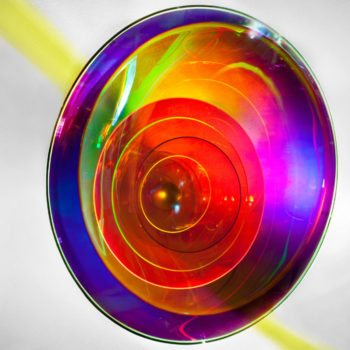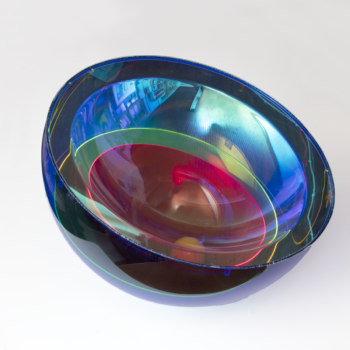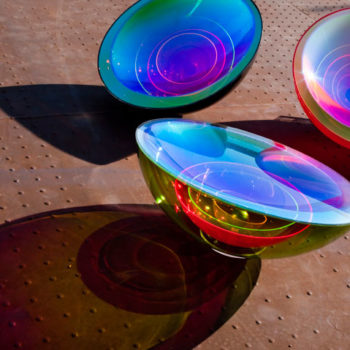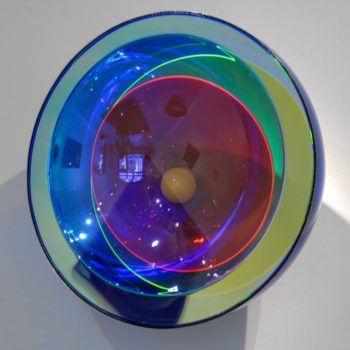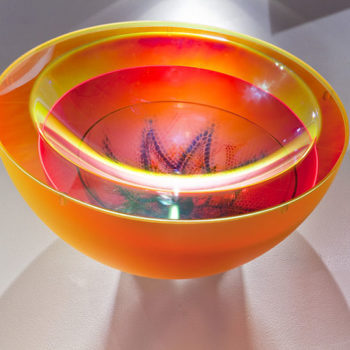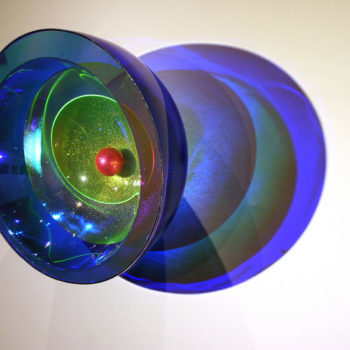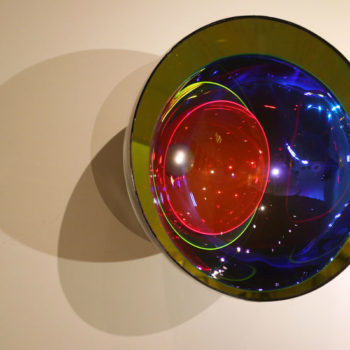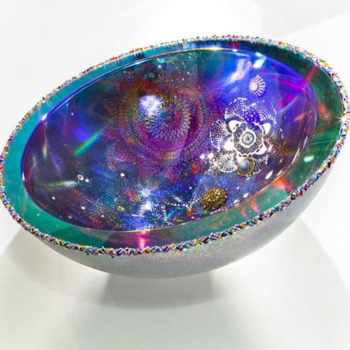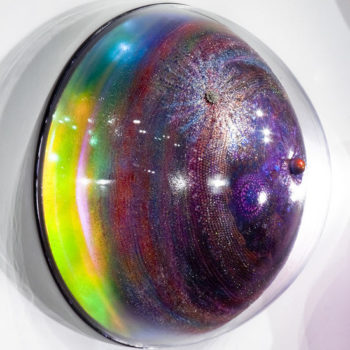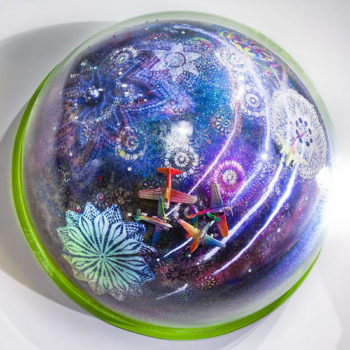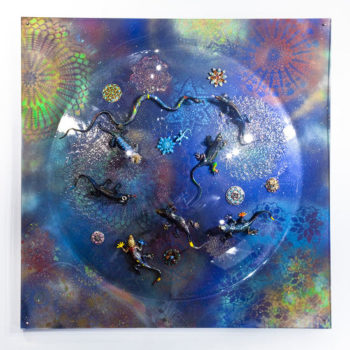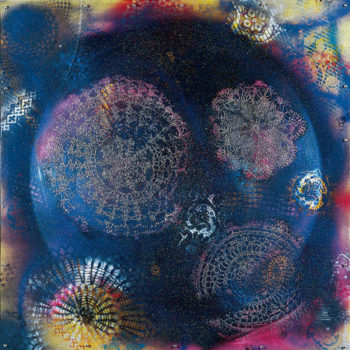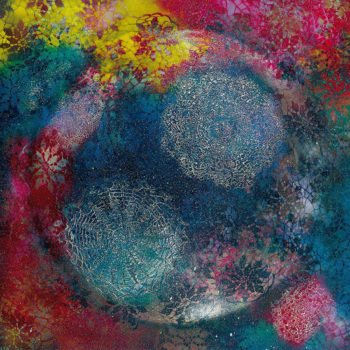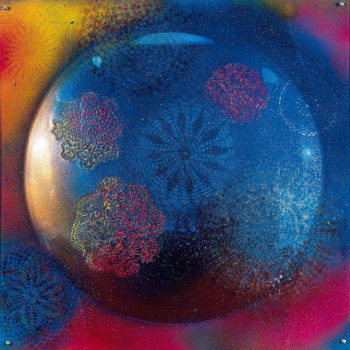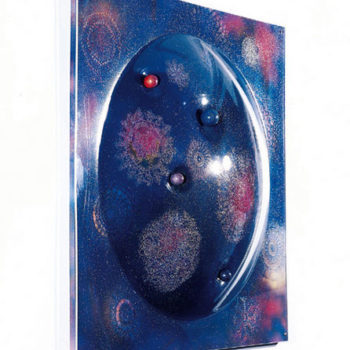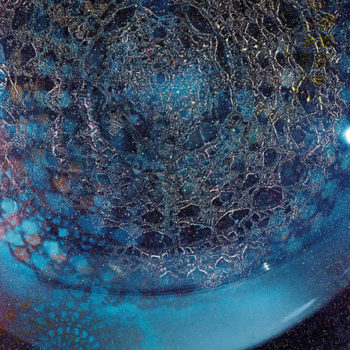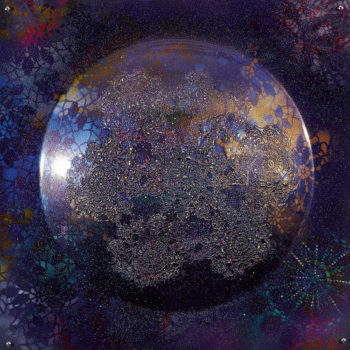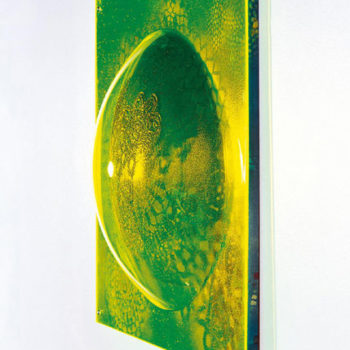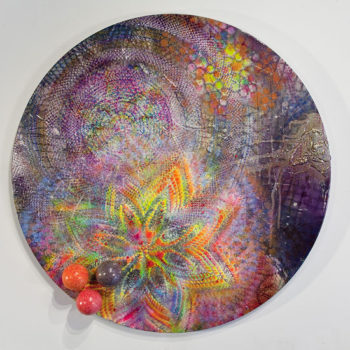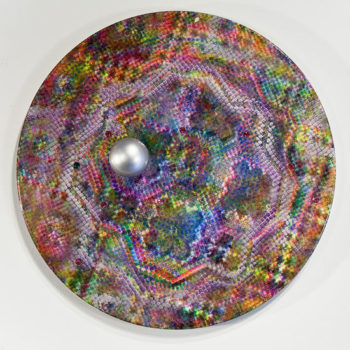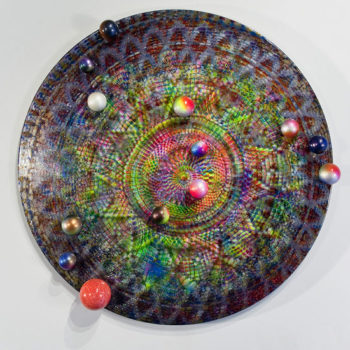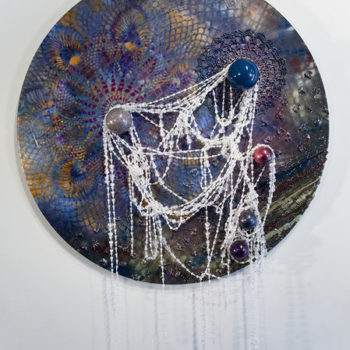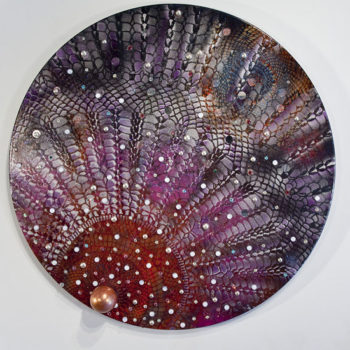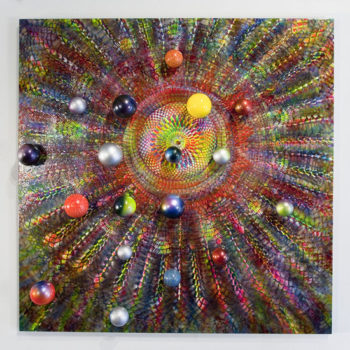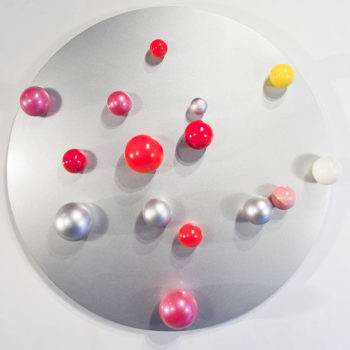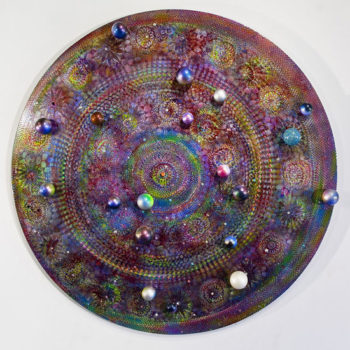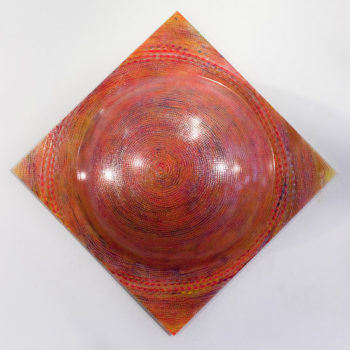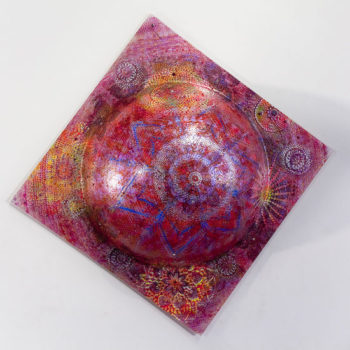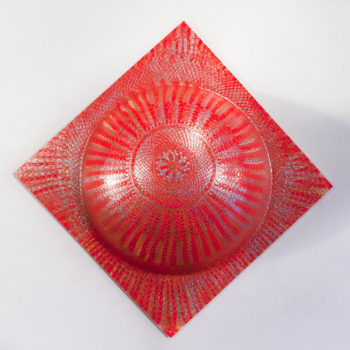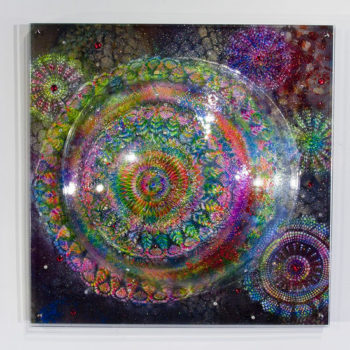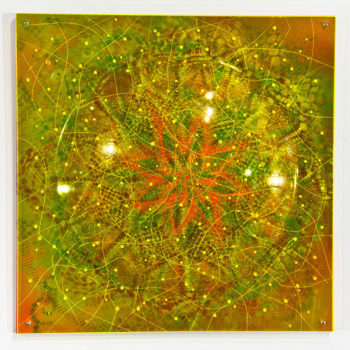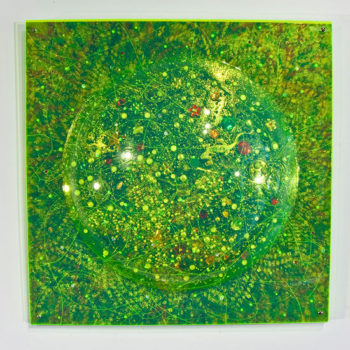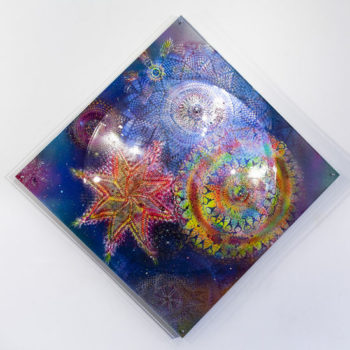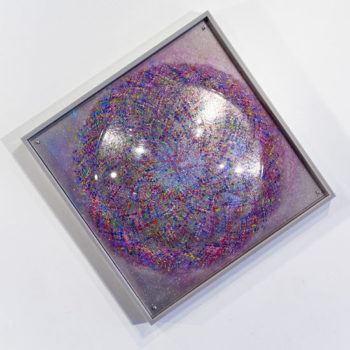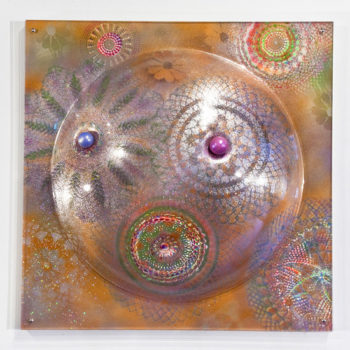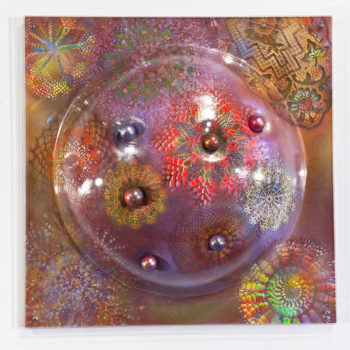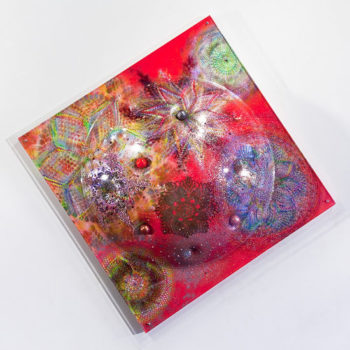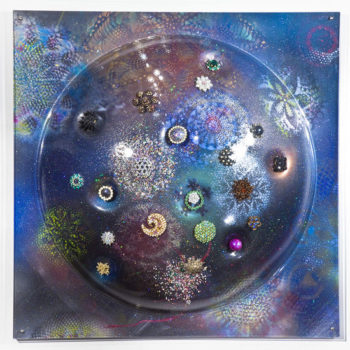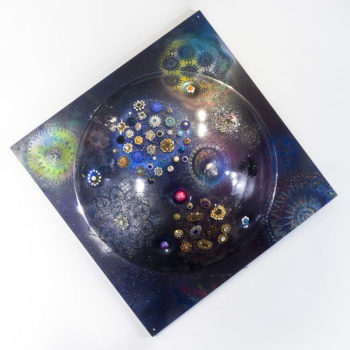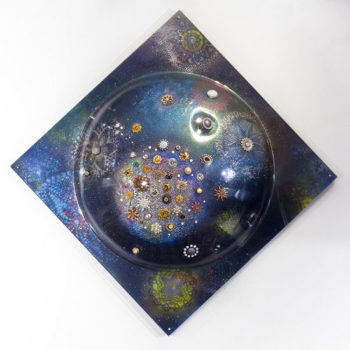Harri Kivi
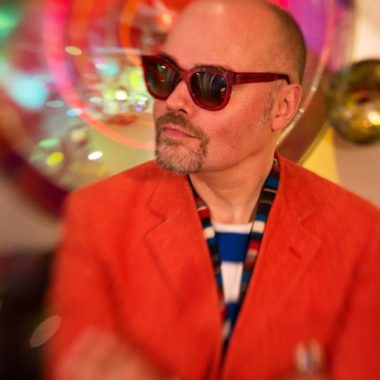
Basic information
b. 1961, Helsinki
Visual Artist, Painter, Installation Artist, Public Artist, Installation Artist
Residence: Helsinki, Finland
Contact information
Phone number: 045 6702850
Email: info@harrikivi.fi
Artist’s Statement
HOMO LUDENS – PLAYFUL MAN
Harri Kivi is a multi-dimensional person, an innovator in the field of art and one of the most original artists in
Finland. His stunning optical works, sensuous microuniverses, are like allusions to distant solar systems. Free
from canonizations of art, Kivi's works move in between sculptures and paintings, as if taking the viewer to the last
rooms of spacely waterways. To him, the optical upside-down turned cosmoses are symbols of enigmatic existence.
Kivi answers to the world the same way as Fernand Léger: "When life is at its cruelest you need to find
how to play." The path of Kivi's production is uncompromisingly inimitable and self-motivated and has no equivalent
in Finland.
SCULPTOR OF CLOUD SHIPS
The visual artist Harri Kivi has influenced the art life in a cheerful and addictively sharp way on a broad front, and
for a long time. Many of his projects, such as a Kauppala, Puska, and Tervetuloa meille, have in many ways been full
weight community art. Myrsky, in particular, a project of his design, has had far-reaching positive reflections to
sociocultural lives of young people.
In addition to explicit and concrete community art, Harri Kivi is a painter first and foremost: in this field his work
divides into two interesting sections: He has brought the ornaments and small forms back to the visual arts yet
giving them additional “shine”, which has often been, unfortunately, interpreted just “as before”. His painting
production, in addition to this, has pursued for dimensions, which do not look like traditional painting, but bring
out the multi-layered reflections of surfaces, thus heading the color out of the matter – between the surfaces.
Elegantly he has captured the possibilities of transparent color.
In Harri Kivi's recent works, plastic domes have opened up, turning towards the viewer. Now they stare at the
recipient with gaping reflections. The dark lace of the Karelian烹yzantine marketplace has been accompanied by its
amazed and unencrypted opposite. Kivi has emptied the square, reflecting the color in ellipses of light towards the
viewer's space. The cloud ships' gaze turns the viewer inside out, inside a corner of an eye of a transparent dome.
The inner life of a cloud ship is clear and floating in light. At times the stomach of the shinging bucket is empty – at
times it becomes filled with bouncing metamorphoses of colors. In the earlier works of Harri Kivi the cosmos
closed layer by layer, turning the plastic dome of architect Alvar Aalto into its opposite, a dark laced microcosmos. Now the constructive amazement becomes a dish that demands reflection. The wanderig eye of colors examines the viewer in ample curves. The reflections are located somewhere outside the work – and yet in the hereness
of the glare.
But where is the surface, exclaims the beholder of Kivi's work. "We only see depth!" Where the structures turn into
glare, we cannot perceive the surface from reflections. Schein, illusion (lume), is an intentional goal. Constructive illusion, the illusion of a spherical gothic window, the shapeless illusion of romanticism, the illusion of
Pompeian red, the lumen (light, hole, cavity).
Altti Kuusamo, Professor of Art History
THE TASK OF THE ARTIST
I've often heard it said that artists are extravagant and crazy and lacking sense. In Harri Kivi this madness connected to artists take place exactly as I understand and accept it, referring to great sensitivity, intelligence,
courage and confidence to take the risk. In its extremity, these are precisely the characteristics that force some
of the artists to complete their deepest perception. Art comes into existence through one's mental activity, a
collaboration of sense and sensibility. Creative work requires observing, comparing and detection of differences.
New art must be created to meet the new needs: When the society changes, so does the message and the impact of
art.
The artist's task is to spread the mental pleasure, to drive our civilization further and to open up new aesthetic
and ethical experiences of values. Among Harri Kivi's production, each piece of work is an individual with its own
exclusive characteristics. Culture is an activity where the qualities are put against each other, a field where
activity can be seen as a battlefield of values. The dilemma of an artist is a metaphysical one: His goal is to find the
truth, which he cannot find, but along the journey he will see something that others do not see. The universal can
only be touched through personal experience. The recipient of art must be able to have confidence, that the
artist doesn't flirt with the presumed general taste, but stays true to himself, preserving his independence.
Jorma Uotinen, Professor
A NEW ROUTE IN ART DISTRIBUTION
The artist's headquarters and Showroom are located in Helsinki, Finland. Welcome!
Translated by: Mikael Brygger, Poet
Harri Kivi is a multi-dimensional person, an innovator in the field of art and one of the most original artists in
Finland. His stunning optical works, sensuous microuniverses, are like allusions to distant solar systems. Free
from canonizations of art, Kivi's works move in between sculptures and paintings, as if taking the viewer to the last
rooms of spacely waterways. To him, the optical upside-down turned cosmoses are symbols of enigmatic existence.
Kivi answers to the world the same way as Fernand Léger: "When life is at its cruelest you need to find
how to play." The path of Kivi's production is uncompromisingly inimitable and self-motivated and has no equivalent
in Finland.
SCULPTOR OF CLOUD SHIPS
The visual artist Harri Kivi has influenced the art life in a cheerful and addictively sharp way on a broad front, and
for a long time. Many of his projects, such as a Kauppala, Puska, and Tervetuloa meille, have in many ways been full
weight community art. Myrsky, in particular, a project of his design, has had far-reaching positive reflections to
sociocultural lives of young people.
In addition to explicit and concrete community art, Harri Kivi is a painter first and foremost: in this field his work
divides into two interesting sections: He has brought the ornaments and small forms back to the visual arts yet
giving them additional “shine”, which has often been, unfortunately, interpreted just “as before”. His painting
production, in addition to this, has pursued for dimensions, which do not look like traditional painting, but bring
out the multi-layered reflections of surfaces, thus heading the color out of the matter – between the surfaces.
Elegantly he has captured the possibilities of transparent color.
In Harri Kivi's recent works, plastic domes have opened up, turning towards the viewer. Now they stare at the
recipient with gaping reflections. The dark lace of the Karelian烹yzantine marketplace has been accompanied by its
amazed and unencrypted opposite. Kivi has emptied the square, reflecting the color in ellipses of light towards the
viewer's space. The cloud ships' gaze turns the viewer inside out, inside a corner of an eye of a transparent dome.
The inner life of a cloud ship is clear and floating in light. At times the stomach of the shinging bucket is empty – at
times it becomes filled with bouncing metamorphoses of colors. In the earlier works of Harri Kivi the cosmos
closed layer by layer, turning the plastic dome of architect Alvar Aalto into its opposite, a dark laced microcosmos. Now the constructive amazement becomes a dish that demands reflection. The wanderig eye of colors examines the viewer in ample curves. The reflections are located somewhere outside the work – and yet in the hereness
of the glare.
But where is the surface, exclaims the beholder of Kivi's work. "We only see depth!" Where the structures turn into
glare, we cannot perceive the surface from reflections. Schein, illusion (lume), is an intentional goal. Constructive illusion, the illusion of a spherical gothic window, the shapeless illusion of romanticism, the illusion of
Pompeian red, the lumen (light, hole, cavity).
Altti Kuusamo, Professor of Art History
THE TASK OF THE ARTIST
I've often heard it said that artists are extravagant and crazy and lacking sense. In Harri Kivi this madness connected to artists take place exactly as I understand and accept it, referring to great sensitivity, intelligence,
courage and confidence to take the risk. In its extremity, these are precisely the characteristics that force some
of the artists to complete their deepest perception. Art comes into existence through one's mental activity, a
collaboration of sense and sensibility. Creative work requires observing, comparing and detection of differences.
New art must be created to meet the new needs: When the society changes, so does the message and the impact of
art.
The artist's task is to spread the mental pleasure, to drive our civilization further and to open up new aesthetic
and ethical experiences of values. Among Harri Kivi's production, each piece of work is an individual with its own
exclusive characteristics. Culture is an activity where the qualities are put against each other, a field where
activity can be seen as a battlefield of values. The dilemma of an artist is a metaphysical one: His goal is to find the
truth, which he cannot find, but along the journey he will see something that others do not see. The universal can
only be touched through personal experience. The recipient of art must be able to have confidence, that the
artist doesn't flirt with the presumed general taste, but stays true to himself, preserving his independence.
Jorma Uotinen, Professor
A NEW ROUTE IN ART DISTRIBUTION
The artist's headquarters and Showroom are located in Helsinki, Finland. Welcome!
Translated by: Mikael Brygger, Poet


